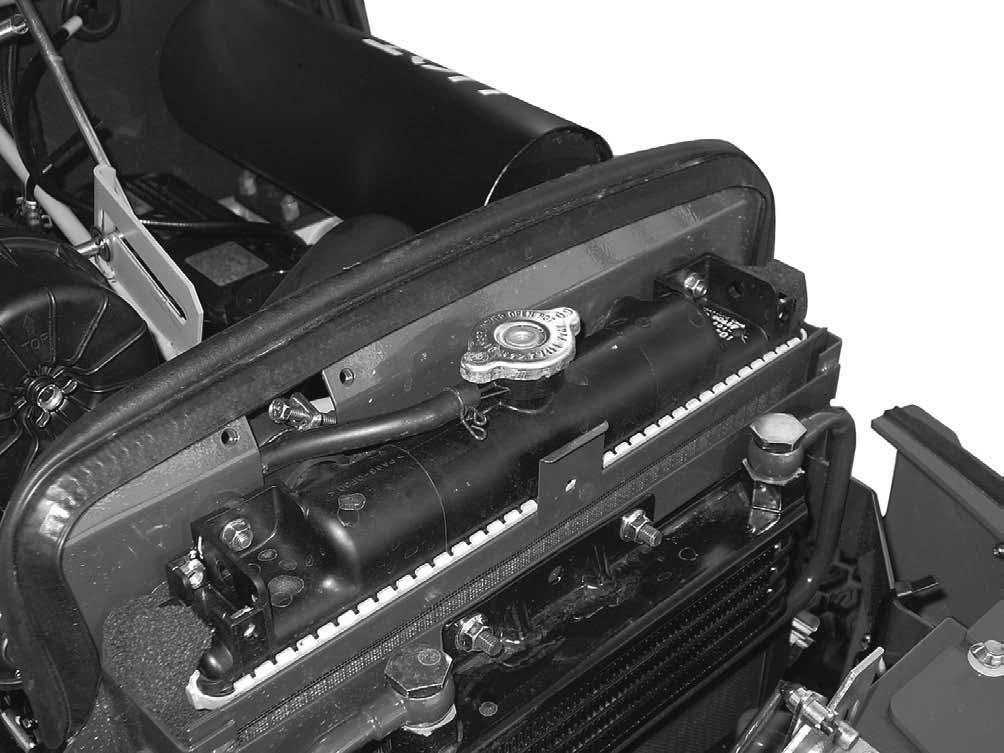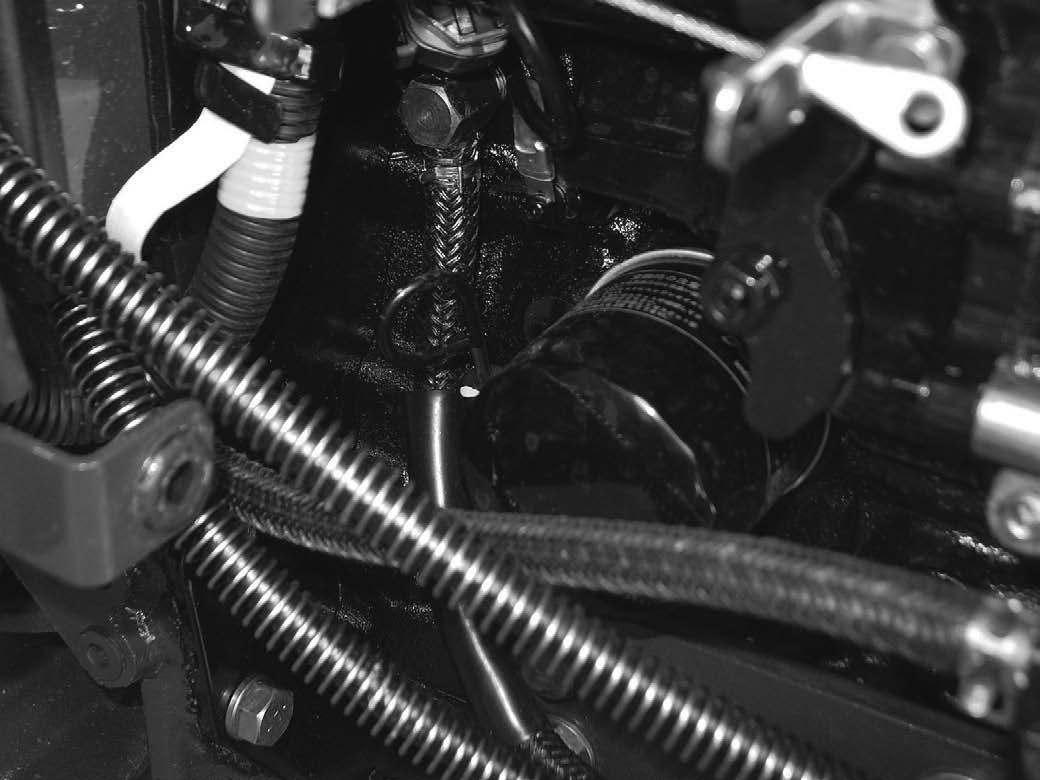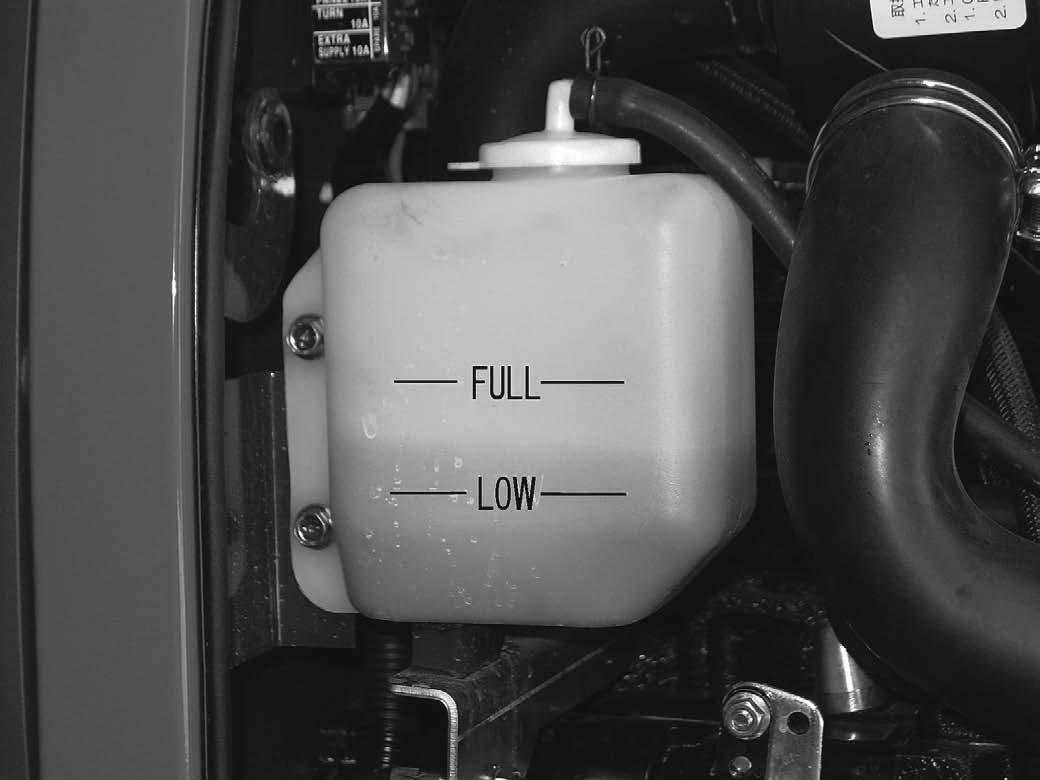
2 minute read
COOLING SYSTEM
Service Specifications
Coolant Change Interval……… Every 1000 hours or once per each year whichever occurs first. Capacity of System
Daily before starting the engine, check the coolant level the coolant reserve bottle. The coolant level should be between the "FULL" and "LOW" lines when the engine is cool.
Pressure Cooling System
Check and service cooling system according to maintenance instructions. Hot coolant can spray out if radiator cap is removing while system is hot. To remove radiator cap, let system cool, turn to first notch, and then wait until all pressure is released. Scalding can result from fast removal of radiator cap.
1. The pressure cap on a pressure cooling system has a control valve that operates as a SAFETY RELIEF VALVE to keep the pressure within the system operating range. Operating the engine without a pressure cap or with a pressure cap but not setting value to operate at the correct pressure can cause damage.
2. A pressure cooling system decreases the loss of coolant caused by evaporation or boiling. The system must have good seals at the radiator cap, hoses and hose connections. It is important that you stop ALL LEAKS OF ANY SIZE as soon as the leaks are found. A small leak can become a large flow when pressure is increased in the cooling system. While the tractor is in operation, a weak hose can break and cause injury or damage. Check all hoses and hose connections with frequency. KEEP HOSES, HOSE CONNECTIONS AND PRESSURE CAP IN GOOD CONDITION.
Coolant Solutions
Your tractor cooling system is equipped with an ethylene glycol coolant solution that has a high boiling point.
IMPORTANT: Change the coolant solution at the change interval recommended in this manual (See Lubrication and service Chart). The heat generated by the diesel engine causes a natural change in the inhibitors in the coolant, which results in loss of corrosion protection. The loss of the inhibitors may cause water pump cavitations and cylinder block erosion. Install only ethylene glycol coolant solution in the cooling system. Use a good quality, high boiling point, ethylene glycol that does not have any additives to stop leaks. Do not install any rust inhibitors that are not approved. It is possible that the rust inhibitors and ethylene glycol will not mix and work against each other to decrease corrosion protection, from deposits in the cooling system and cause damage to the cooling system and the radiator.
Do not use a low boiling point, alcohol type coolant solution. The boiling point of alcohol is below the tractor minimum operating temperature; loss of coolant due to evaporation will result.
IMPORTANT: Always have a minimum of 50 percent ethylene glycol coolant in the cooling system at all times and at all ambient temperature ranges. Do not install more than 50 percent ethylene glycol in the cooling system unless the ambient air temperature will be less than -34oF. More than 50 percent ethylene glycol decreases heat transfer and will cause the engine surface temperature to be higher than normal.
Cleaning The Cooling System
IMPORTANT: NEVER PUT COOLANT IN A HOT ENGINE: THE ENGINE BLOCK OR CYLINDER HEADS CAN GET CRACKS BECAUSE OF THE DIFFERENCE IN TEMPERATURE BETWEEN THE METAL AND THE COOLANT.
Clean the cooling system each time when the coolant is changed. See the Lubrication and Service Chart in this manual for recommended change intervals. Clean the system as follows:
1. Remove the hose to drain the coolant. Close the plug after the system is empty.
2. Install a good type of radiator cleaner and fill the system with clean water. Follow the instructions given with the radiator cleaner.
3. Remove the radiator cleaner solution. Flush the system with clean water.
4. Fill the cooling system with the coolant solution specified in this manual. Install coolant system treatment (If required). See Coolant Solutions in this manual for more information. ( P92 )
5. Check the hoses, radiator, pump and water manifold for leaks.

IMPORTANT: Never drain the coolant when the engine is hot.
NOTE: After the cooling system is completely filled, run the engine for approximately five minutes to remove all air from the system. Check the coolant level and add coolant if needed.











